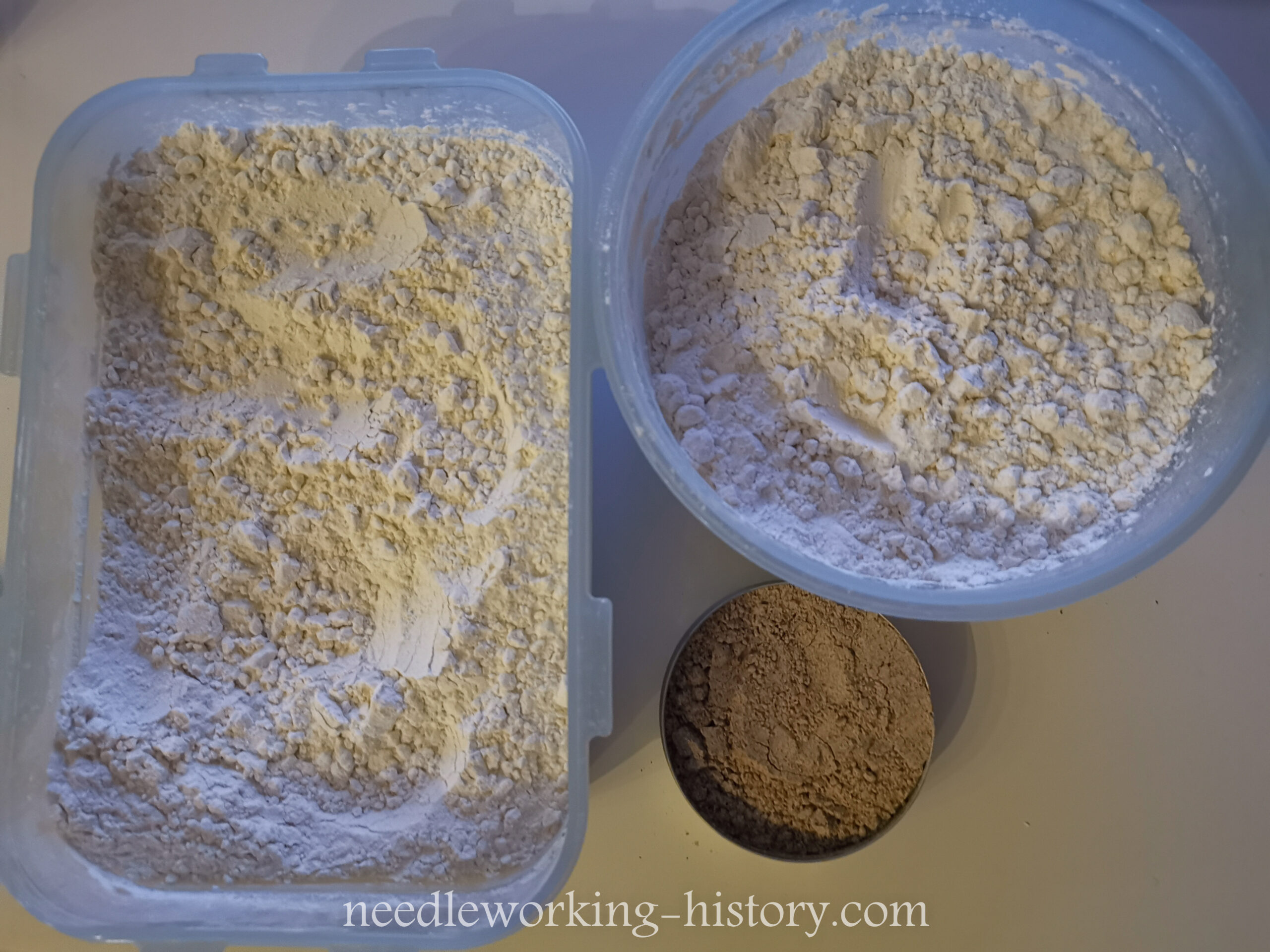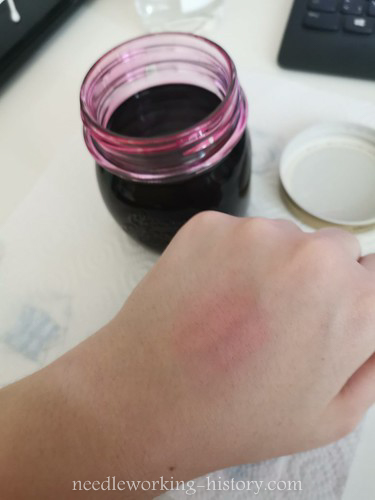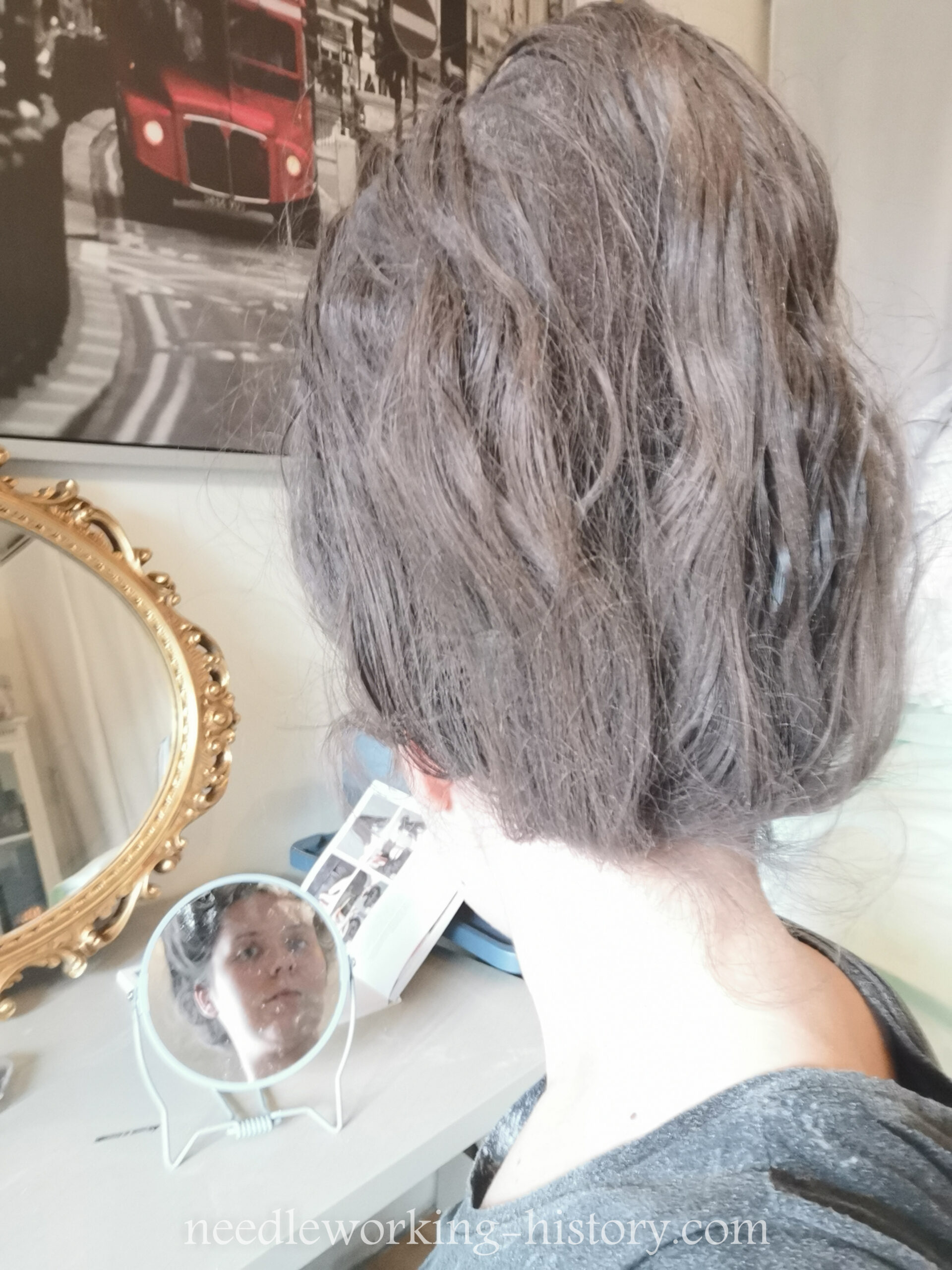Hair powders.
They are extremley important for styling 18th century hair and still was important in the 19th century.
If you want to make historical accurate hairstyles you start with using pomade to make your hair thicker (A series on pomades is in the making!). But If you use only pomade your hair will be super greasy and stringy and not nice to look at.
So you apply powder to take away the greasiness and add texture.
Your hair will also be much more easy to style when you used pomade and powder!
There are many ways on how to make hair powder and what to use as hair powder.
Nowadays many use baby powder and I also heard that many people use cheap loose face powder which both I wouldn’t recommend for various reasons. But what did people really use on a day to day basis and is it possible to still use it today?
I took a deep dive into hair powders a while ago and am finally able to share what I found out!
As always I started looking into books from the time like ‚The Toilet of Flora‚ from 1779 and ‚Five thousand receipts in all the useful and domestic arts‚ from 1829. I also looked into two german books ‚Toiletten-Chemie‚ from 1874 and a book I own called ‚Der Drogist – 2. Band‘ from the early 20th century.
What I found out was that wheat, potato and rice starch were used most throughout the 18th and 19th century to make powders for the hair and body and not normal flour! But also chalk or ground up fish bones were used a lot because both are perfectly white and lighten the complexion a bit when applied.
The mixture you chose was then perfumated with fresh or ground up flowers, spices or with florentine orrice root or essential oils. You could use what you wanted to smell like and there was no right or wrong when it came to hair powders!
You could also colour your hair powder to your liking. (light pink or violet or grey hair powder was a thing back then!)
It is still possible to get all the ingredients they used in the 18th and 19th century today. Even the ground up fish bones which smell…not really nice so I didn’t buy and use them. But if you want to: Feel free!
I tried out 3 different hair powders.
The white powder in The Toilet of Flora, the mareschal powder from the new American Duchess book and I also mixed my own hair powder.
White powder
Take four pounds of Starch, half a pound of Florentine Orrice-root, six Cuttle-fish Bones; Ox Bones and Sheeps Bones calcined to whiteness, of each half a handful; beat the whole together, and sift the Powder through a very fine sieve.
I made the powder without the bones and a little less florentine orrice-root because it smells so strong of violets.
The powder is very white, smells great and I used it as a normal dry shampoo for the past few weeks and like it a lot. It gives my hair a lot ofvolume and it doesn’t itch like store bought dry shampoo which is great. And it’s also extremley cheap to make! (For this one I used cornstarch because I wasn’t able at that time to get wheat starch)



The next hair powder I made was the mareschal powder from American Duchess.
I tried to find a recipe like this in contemporary books but I couldn’t find any that used all of the spices AD used. Only cloves and cassia, but no cinnamon, mace or ginger. I’d love to know where they got this information from, because it’s not in their notes in the book…
For the hair powder they used their white hair powder (I used mine since both are based on the same recipe – only the ratio was different), mace, cinnamon and cloves.
When I mixed the hair powder together I had breathing problems because the smell was so overwhelming and I had to leave the kitchen for a good while. I wouldn’t recommend using this much spice if you’re sensitive to smell. (I’m not at all and had to leave the kitchen…so keep that in mind)
The powder smelled pretty stong but it’s meant to be used as a finishing powder and I think this could be great for this kind of use. Especially in autumn and winter. You’re going to smell slighly like christmas!
(I’ll give you an update when I finally have made pomade and tested the powders with it!)
I sifted the powder again and this was good because mace is a pretty moist spice and it made a few clumps.


The last powder I made is again based on The Toilet of Flora but I used my knowledge to mix it up and create a kind of historical accurate hair powder.
I used real wheat starch, florentine orrice root and neroli oil to perfume it.
I mixed up 400g wheat starch, 50 g florrentine orrice-root and 8 drops of neroli oil and sifted it 4 times. It smells wonderfull and I can’t wait to use it.



With a lot of different powders made, I went back to research and tried to find out what people also did with hair powders.
In Toiletten-Chemie I read that older ladies would use the powders to even out wrinkles and make the complexion look younger and that someone who uses powders also knows what they use it for.
So it was common knowledge how and for what to used powders.
I was also quite amazed, that a rabbit’s foot should be used to apply the powder to the face and if you use powder to dry your body after washing you should use the fur of a swan.
In many advice books from the mid to late 1900s I found many statements that hair powder would be perfect for smelly feet (just apply it into the stockings), chafing between thighs or for children. The same things we use baby powder nowadays.
I also found recipes for body powders with talc (the same ingredient as in modern baby powders) but it was basically used for the same purpose.
I also used both white hair powders as a body powder on a hot day and both felt quite nice.
As you can see hair powders were more universal powders than only for hair and you can still use them today. They are extremley cheap to make and you can use scents you like!
The next time you’re going to read about hair powders will be in conjunction with pomade which I’m trying to make completley from scratch right now! I’m still searching ingredients everyone can get since we in europe don’t get already rendered fats!





